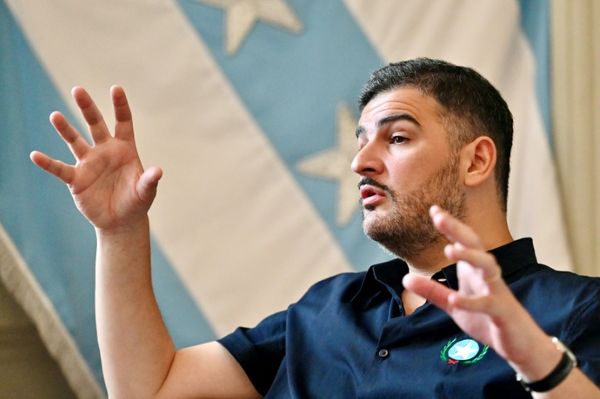
Leningrad, 1942. A city under siege. Hitler has declared that it must be rendered uninhabitable and razed to the ground. A ring of German steel ensures almost no food can enter, and three million people are starving to death. The streets are stacked with emaciated corpses, some of which bear evidence of cannibalism. And yet a former tsarist palace in the city centre, close to the Hermitage Museum, houses a great repository of nuts, grains and tubers, the result of decades of plant-hunting by some of the foremost botanists of the era. This is the All Union Institute of Plant Breeding, otherwise known as the Plant Institute, the world’s first seed bank. What will the scientists who work here do? Safeguard their collection, and with it the prospect of high-yield, disease-resistant crops to feed future generations? Or eat it?
This moral dilemma lies at the heart of Simon Parkin’s book The Forbidden Garden of Leningrad, a history of the Plant Institute during the siege, which lasted almost 900 days, from 1941 to 1944. As we have come to expect from Parkin, whose 2022 book The Island of Extraordinary Captives looked at internment camps for “enemy aliens” on the Isle of Man, it is a richly researched and meticulously observed account of a little-explored corner of 20th-century history.
Parkin begins with Nikolai Vavilov, the brilliant Russian botanist behind the seed bank project. Vavilov was a latter-day equivalent of the plant-hunting explorers of the botanical golden age, the likes of Carl Linnaeus, Joseph Banks and Alexander von Humboldt, who set out for foreign parts with sketchbooks and specimen jars and returned with thousands of specimens previously unknown to European science. Vavilov, too, travelled the world in search of rare vegetable species, bringing their seeds back to the palace on Herzen Street. His aim was to develop new breeds of hybrid “supercrops” that would end famine, a pressing issue in the USSR in the 1920s and 30s.
But botany, like everything else in the Soviet Union, was subject to the paranoid politics and capricious violence of the Stalinist system, and in August 1940 Vavilov disappeared during an expedition to the Carpathian mountains. His colleagues didn’t know it, but he had been arrested by the secret police. They would subject him to 900 hours of brutal interrogation, forcing him to confess falsely to plotting against the Soviet Union, and sentencing him to death. Vavilov would die in the Gulag in 1943, aged 55.
In the absence of their inspirational leader, the Plant Institute’s employees carried on as best they could, safeguarding “the history of the planet as encoded in the DNA of its plant life”, as Parkin describes the seed collection. In September 1941, the siege began. Its history is familiar from other accounts, notably Harrison E Salisbury’s The 900 Days, but Parkin views it through the lens of the institute’s staff, who demonstrate a devotion to their specimens that borders on the absurd. To refresh the more perishable parts of the collection, the scientists must replant their seeds and tubers and reharvest them. This leads to such Pythonesque scenarios as the ploughing of a field the botanists have chosen because the soil is especially fertile, but which is in sight of German snipers and artillery. Numerous people are killed, including six agricultural workers in a single shellfire incident.
The heroism of the institute’s scientists and workers is beyond doubt, but this and other stories raise the question of whether their devotion to the samples was entirely fitting, or whether the nutrients in the seed bank could have been better used to save the starving instead. In their defence, Parkin states that by 1979 a third of all Russia’s arable land was planted with seeds derived from the collection. But without a comparative study of grains that weren’t descended from those in the institute it is surely difficult to assess their impact. Plus, some of the worst famines in the USSR, including the Holodomor in Ukraine, were not caused by the poverty of Soviet seed varieties, but by government policy.
Asked by a journalist after the war why they chose to die of hunger while surrounded by food, the institute’s leaders seemed bemused. Vadim Lekhnovich, who spent much of the siege trying to protect the institute’s potato collection from German shellfire, said that while starvation meant it was “unbearably difficult to get up every morning [and to] move your hands and feet”, refraining from eating the collection wasn’t hard at all. “It was impossible to eat your life’s work, the life’s work of your friends and colleagues,” he said. The scientists made a rational decision, in other words, to protect their legacies over their lives. But those among the besieged who didn’t work for the institute were dying just as fast. Given the chance, would they have made a different calculation?
• The Forbidden Garden of Leningrad by Simon Parkin is published by Hodder & Stoughton (£25). To support the Guardian and the Observer, order your copy at guardianbookshop.com. Delivery charges may apply.






